The 2023 Hyundai Ioniq 6 is different. The electric sedan may share its E-GMP underpinnings with the Ioniq 5 electric hatchback, but its aerodynamic design not only optimizes range, it stands out for the sake of standing out. Different is daring, and daring is good, especially in a nascent EV world that looks more similar than different.
The Ioniq 6 sedan is the most aerodynamic production car in the brand’s history with a super-low 0.22 coefficient of drag (0.21 in markets where it uses camera-based side mirrors). That nearly matches the cds of top electric cars such as the Lucid Air, Mercedes EQS, and Tesla Model S. Those luxury flagship sedans cost at least twice as much and stretch out at least a foot longer, which makes Hyundai’s compact aero gains even more impressive.
In the real world, or the EPA’s version of a real world, the Ioniq 6’s aerodynamics translate in part to 361 miles of range, and an efficiency rating of 4.2 miles per kwh for the SE Long Range model.
Aero matters. Especially when trying to hurdle a benchmark. The Ioniq 6 out-Tesla’s the Tesla Model 3 Long Range AWD with its 358-mile range and efficiency of 3.9 miles per kwh. It’s not as quick or sporty as the Model 3, but for many electric vehicle owners, efficiency matters more than sportiness.
2023 Hyundai Ioniq 6
Hyundai does it with style. It uses the same 77.4-kwh battery pack and permanent magnet synchronous motors as the related Hyundai Ioniq 5 hatchback, which in its most efficient single-motor form has a corresponding range of 303 miles and a rating of 3.3 miles per kwh.
The sedan stretches nearly nine inches longer than the Ioniq 5, yet its 116.1-inch wheelbase is 2.0 inches shorter. It also sits more than four inches lower and has a half-inch lower ground clearance. It weighs about 50 pounds less too, averaging about 4,300 pounds with a single motor and large battery pack or about 4,550 pounds in dual-motor models.
The Ioniq 6 steps out of the shadow of the Ioniq 5 and carries automotive evolution on its curves, channeling the 1930s Stout Scarab airplane fuselage-inspired design to the modern day. There’s even a nod to the icon of icons in the 1970s Porsche 911 Carrera and its rear ducktail.
This is a Hyundai. It makes you look twice before you even notice the badge.
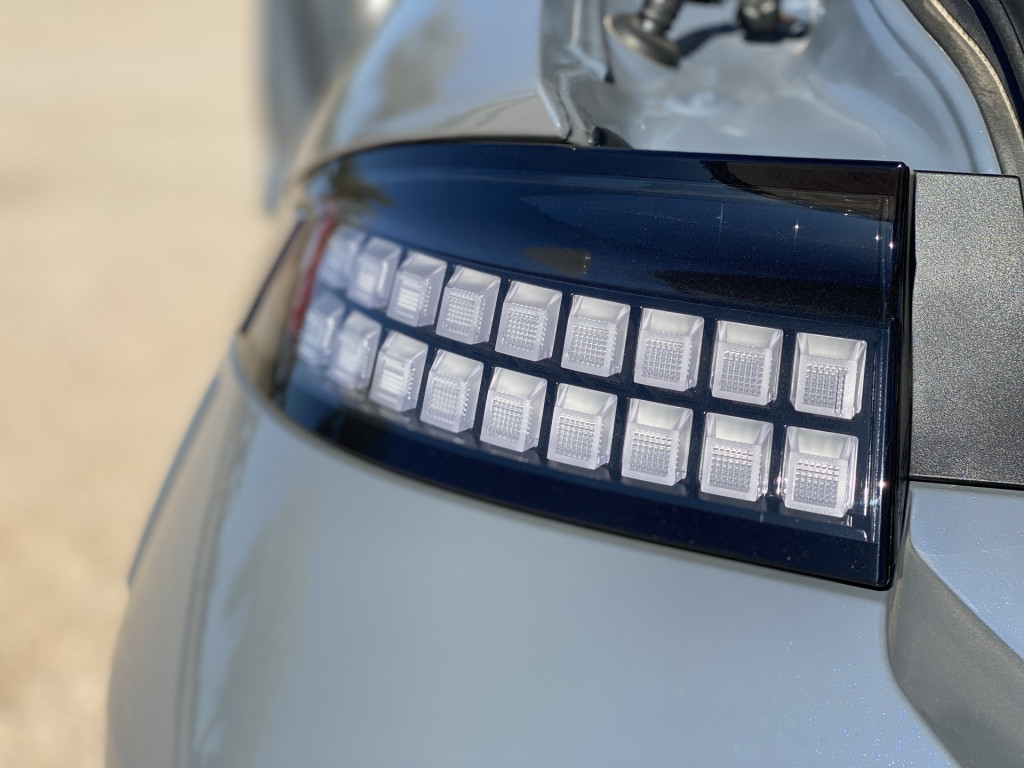
2023 Hyundai Ioniq 6

2023 Hyundai Ioniq 6

2023 Hyundai Ioniq 6
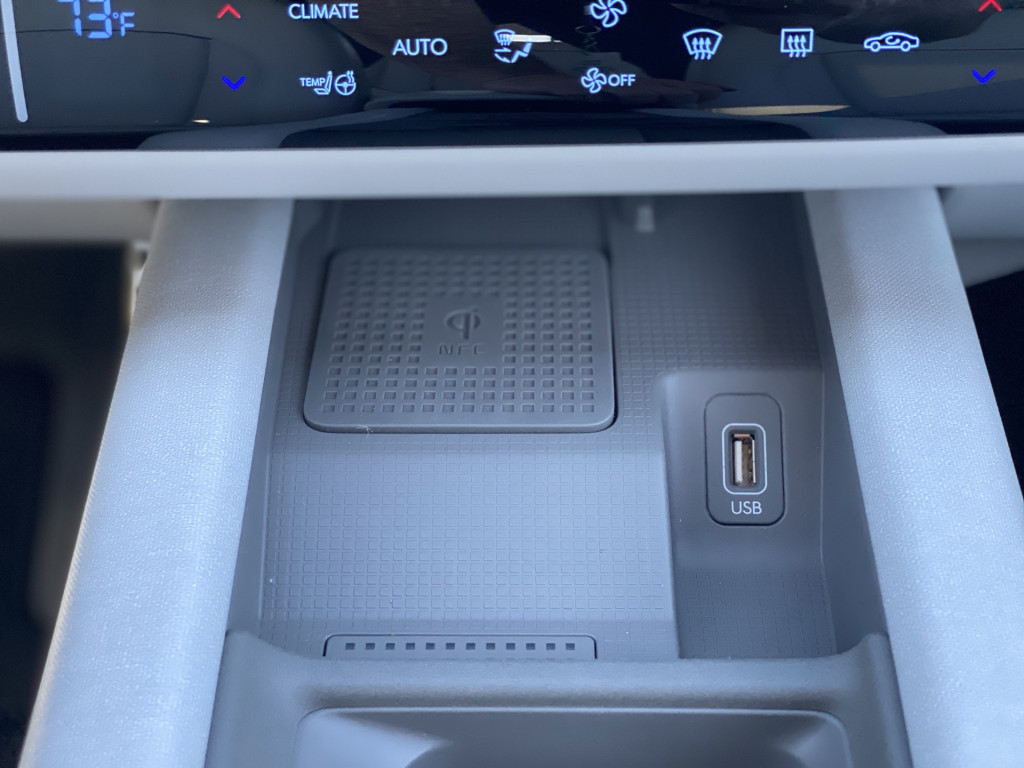
2023 Hyundai Ioniq 6
What’s with the 700 Parametric Pixels?
Flush door handles and a pixelated design theme are the only outward relations to the Ioniq 5, and the Ioniq 6 really leans into the pixelation. It makes the daytime running lights look like mini ice cube trays; they comprise the reverse lights, rear lightbar, and indicator lamps in the side mirrors. The tiny squares stamp nearly every surface on the interior, on the door panels, dead pedal, dash trim, door sills, speaker cover, and smartphone charger. They even replace the Hyundai badge on the steering wheel with four illuminated dots, which happens to be Morse code for the letter H. Those dots change colors temporarily when switching drive modes from blue for Normal to green for Eco and red for Sport.
How does the 2023 Hyundai Ioniq 6 drive?
Most of my time was spent in a loaded Limited AWD model with 20-inch wheels that tops the listing at $57,215, including destination. It hits 60 mph in 5.1 seconds, and while it doesn’t jump off the line like some other EVs it’s quick enough to leap ahead of traffic.
Most Ioniq 6 use a 77.4-kwh battery pack and the choice of either a single permanent magnet synchronous motor with rear-wheel-drive or a dual-motor setup with all-wheel drive. Later this summer, Hyundai will offer a base SE Standard Range with a 53-kwh battery pack and a 240-mile range for $42,715.
The 168-kw single-motor version makes 225 hp and 258 lb-ft of torque, and it posts a 7.4-second time to 60 mph. The dual-motor setup uses a 75-kw motor up front and a 165-kw motor at the rear that combine to make 320 hp and 446 lb-ft, same as in the Ioniq 5.
The five drive modes are Eco, Normal, Sport, Snow, and Custom. Sport adjusts the steering feel from its default light feel to more resistance, and it automatically apportions torque between the axles for best traction based on inputs. Eco mode is nearly all rear-wheel drive, and Snow mode splits the torque evenly. During my drive outside Scottsdale, the grip on my test car’s Pirelli P Zero tires was never tested to the limit, but the sedan maintained its balance reasonably well, but the car leaned noticeably in turns, despite the lower sedan stance.
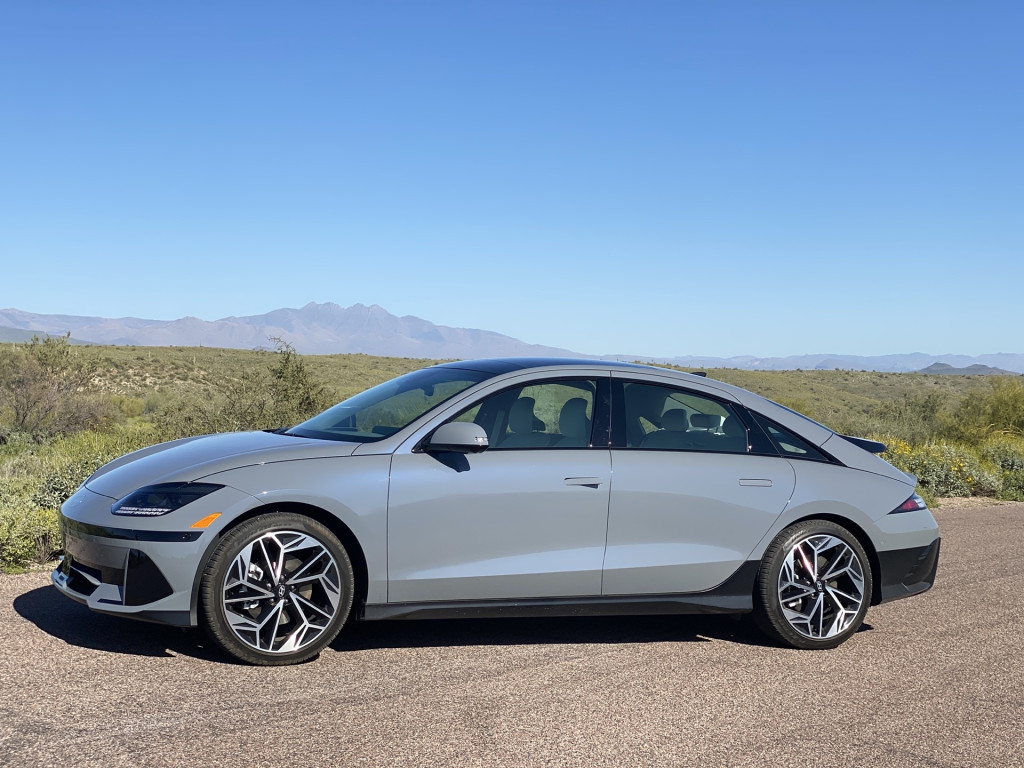
2023 Hyundai Ioniq 6
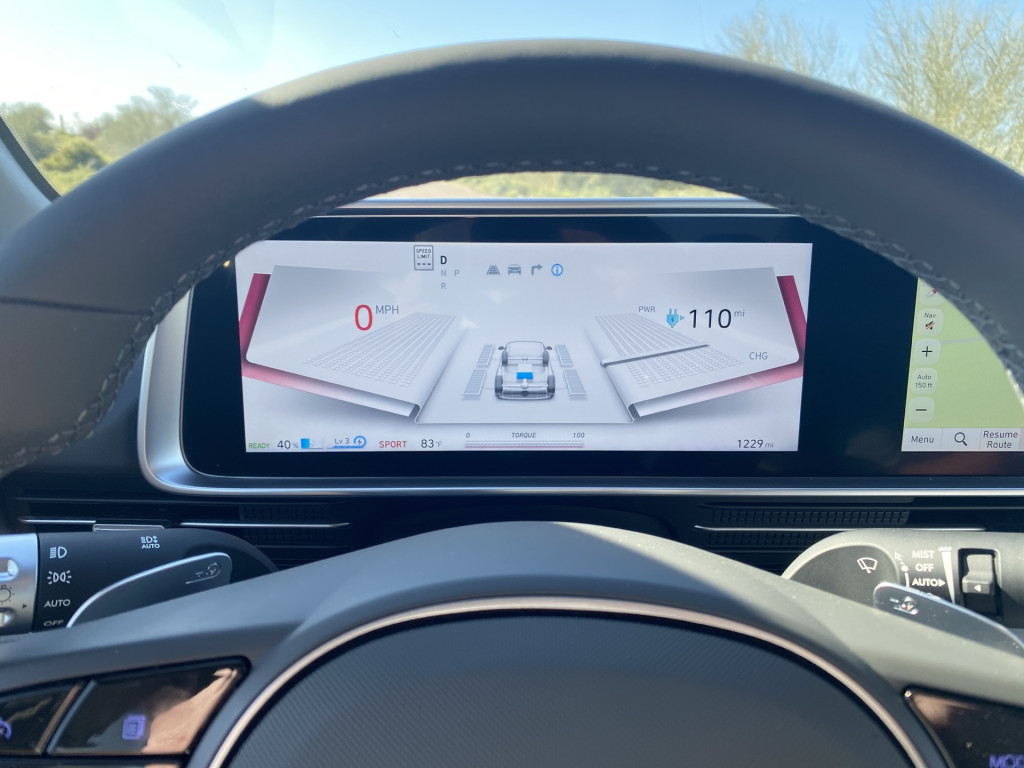
2023 Hyundai Ioniq 6
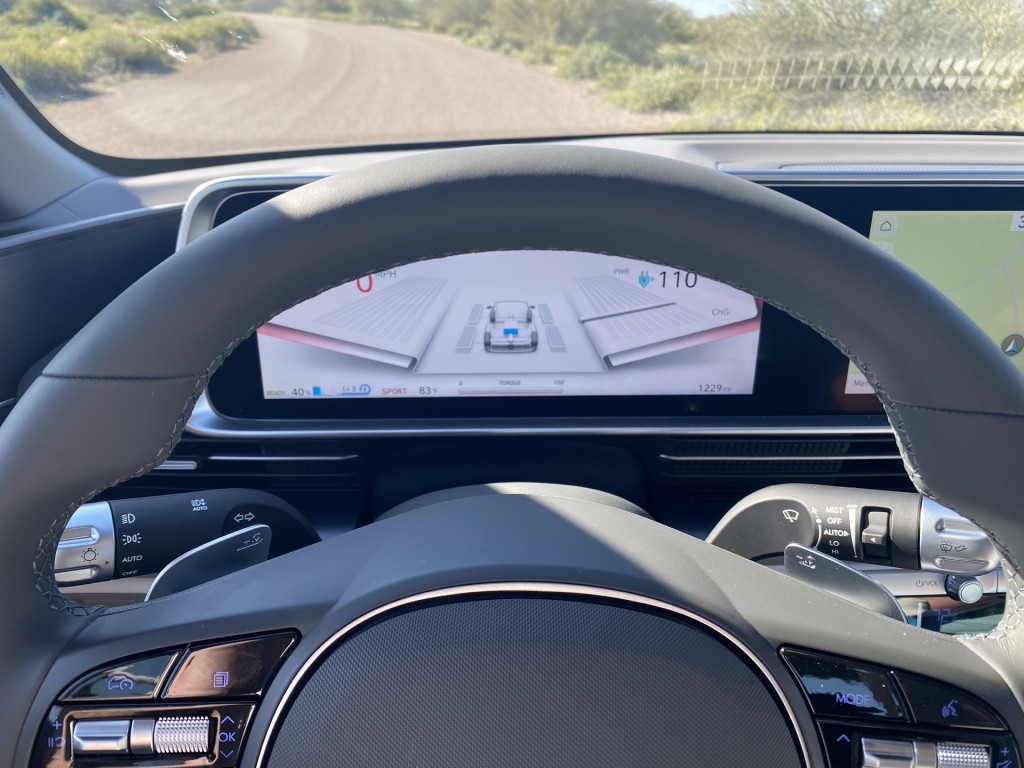
2023 Hyundai Ioniq 6
Regardless of the trim, Hyundai equips the Ioniq 6 with an independent suspension with MacPherson struts up front and a multilink rear. Rubber bushings substitute for hydraulic ones in the Ioniq 5 to minimize road vibrations, and frequency-sensitive shocks with greater oil flow are used for better responsiveness to speed and road conditions. It’s quieter and calmer than a Model 3, but not as agile.
The Ioniq 6 would seem the ideal candidate for a more performance-oriented N model, but the Hyundai Ioniq 5 N debuts first this July, replete with a lowered suspension, an electronic limited-slip rear differential, and a Drift mode. Interesting.
For now, the Ioniq 6 is spry but not sporty, responsive but not necessarily quick, and mostly it’s a calm, quiet sedan optimized for efficiency.
Ioniq 6 range and efficiency
Wheel and tire sizes make a big difference in efficiency. The SE Long Range with 18-inch wheels has an EPA-estimated range of 361 miles, and a rating of 4.2 miles per kwh.
In heavier SEL and Limited RWD models with 20-inch wheels, the range drops down to 305 miles and 3.5 miles per kwh.
Four regenerative braking settings accessible through steering wheel paddles can adjust the efficiency. The one-pedal driving mode takes some modulation on the throttle to avoid its characteristic grabbiness.
The SE AWD with 18-inch wheels has a 316-mile range and efficiency of 3.6 mi/kwh, whereas the SEL or Limited AWD with 20-inch wheels drops down to 270 miles and 3.1 mi/kwh. For comparison, the Tesla Model 3 Long Range AWD goes 358 miles and 3.9 miles per kwh.
Why buy the Hyundai Ioniq 6?
It’s not as practical as the Ioniq 5, with a roofline that cuts into rear headroom and causes 6-foot passengers to contort. The 39.2 inches of rear legroom is exceptional for a sedan of this size, however. Folding down the 60/40-split rear seats doesn’t open up much vertical space from the narrow 11.2-cubic-foot trunk. It’s also not as tech-forward or as sporty as a Tesla Model 3.
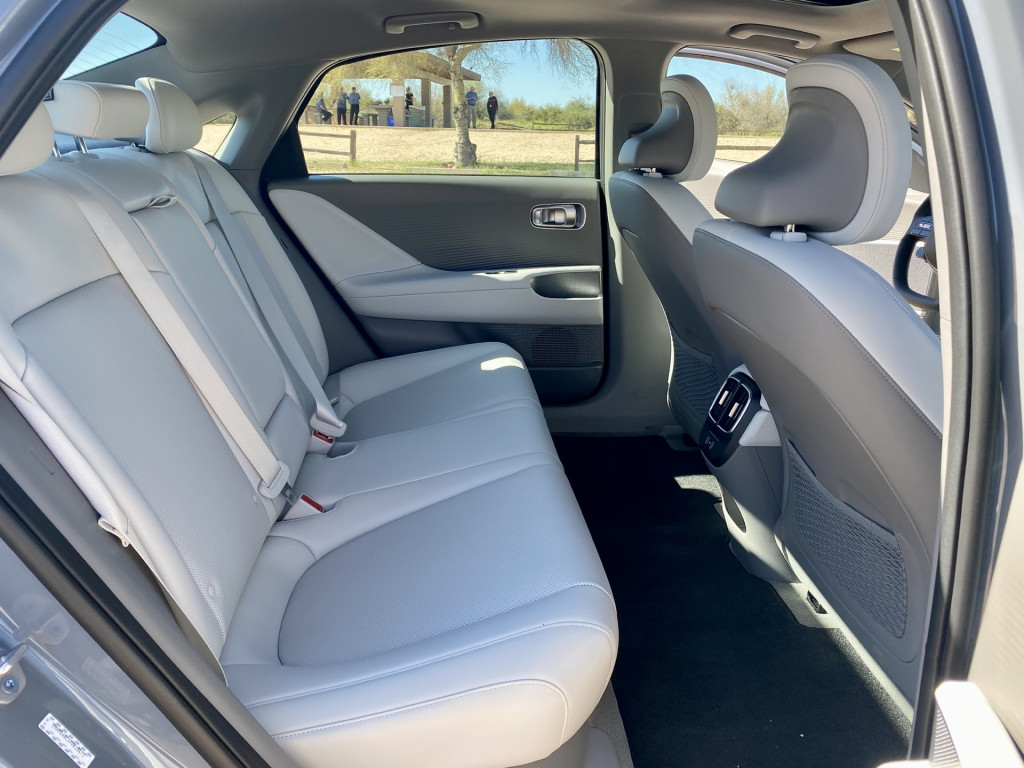
2023 Hyundai Ioniq 6
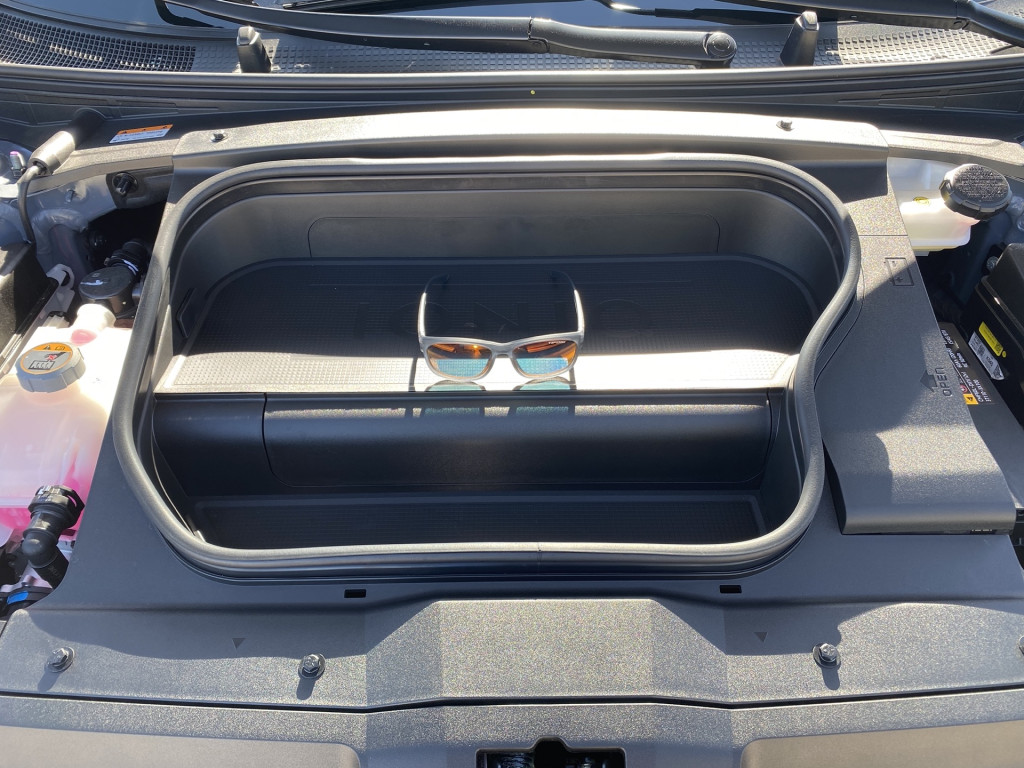
2023 Hyundai Ioniq 6
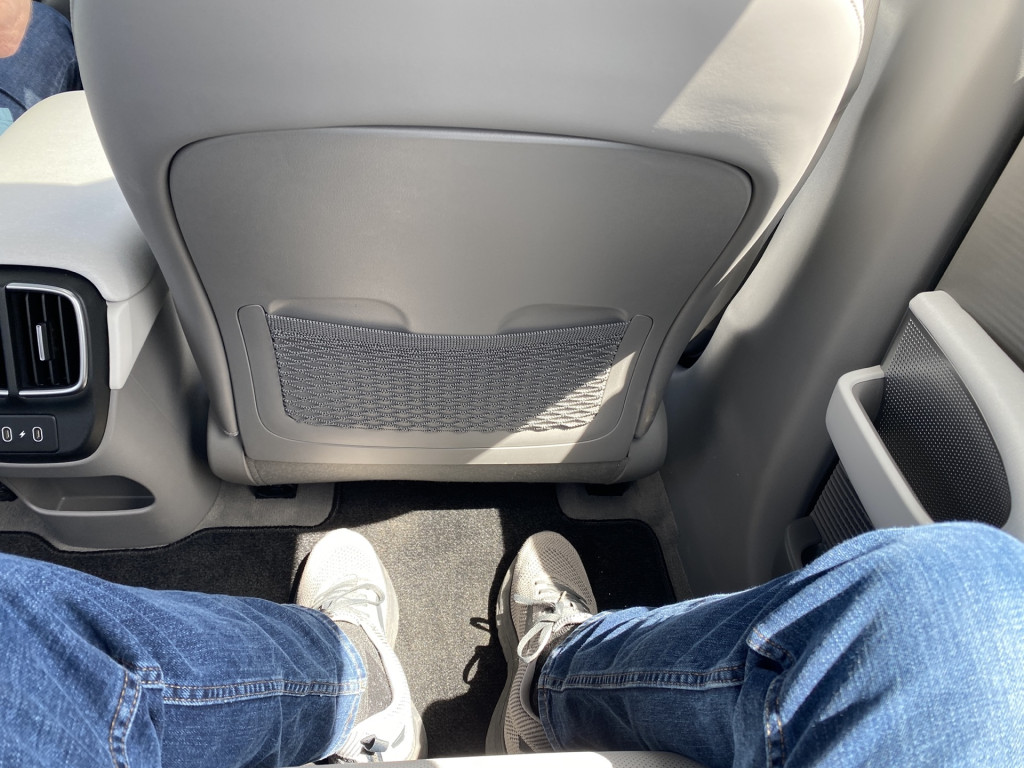
2023 Hyundai Ioniq 6
But, it’s a relative value, despite not qualifying for the latest iteration of the $7,500 federal EV tax credit. Standard features include heated front seats, a power driver seat, five USB ports, a 12.3-inch digital instrument cluster, a 12.3-inch touchscreen, and wired Apple CarPlay and Android Auto compatibility. Yeah, still no wireless smartphone connectivity for Hyundai. An updated Digital Key smartphone controller no longer requires a subscription and comes with greater functionality.
Standard driver-assist tech includes automatic emergency braking, blind-spot monitors, active lane control, automatic high beams, and adaptive cruise control down to a stop. New front and rear corner radar sensors, as well as new camera hardware, make the driver-assist tech more comprehensive in detecting cyclists, pedestrians, and turning cars.
Options such as bi-directional charging on top models enable vehicle-to-load charging to power appliances, tools, or for camping gear.
Its value proposition, as well as its range and efficiency, are compelling reasons to seek out the 2023 Ioniq 6.
But the most compelling reason is it’s different. Sometimes, that makes all the difference.
Hyundai paid for lodging and airfare for Motor Authority to present this firsthand report.
